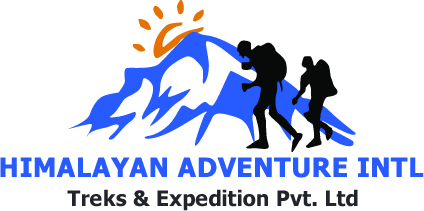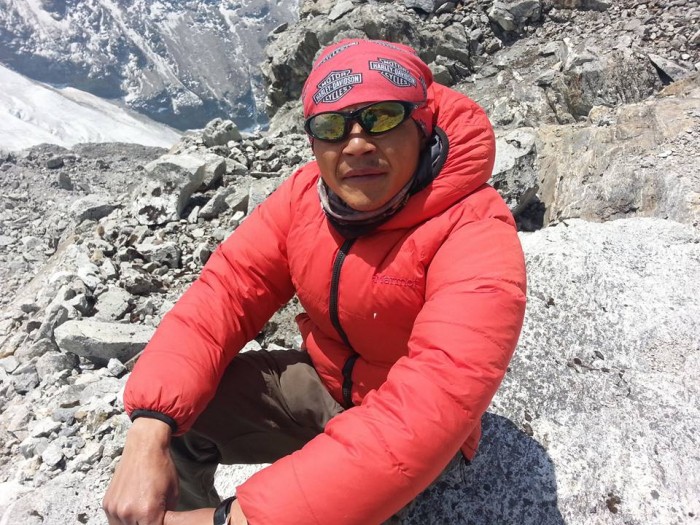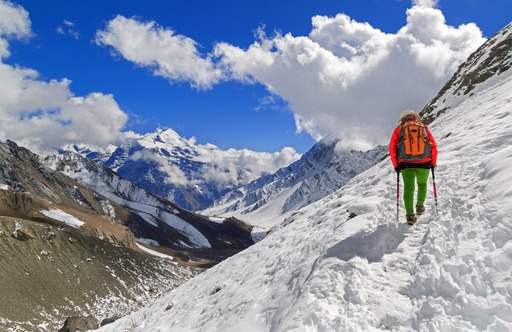Chulu East Peak Climbing from Knawal is one of Nepal’s most thrilling yet achievable trekking peak adventures. Towering at 6,584 meters, this peak belongs to the Damodar Himal range in the Annapurna region. It offers breathtaking views, alpine experiences, and a moderately technical climb, making it a popular choice for climbers aiming to conquer the Himalayas without extreme altitude exposure.
In this comprehensive guide by Himalayan Adventure International Treks, we cover everything you need to know about Chulu East Peak Climbing, including the cost, itinerary, permit fees, success rate, deaths, base camp access from Knawal, and comparisons with other peaks like Pisang Peak Climbing and Thorong Peak Climbing.
🏔️ Overview of Chulu East Peak Climbing
-
Peak Name: Chulu East Peak
-
Region: Annapurna (Manang district)
-
Altitude: 6,584 meters (21,601 feet)
-
Climbing Grade: Alpine PD+ (moderate)
-
Best Season: March to May and September to November
-
Starting Point: Knawal (Khangsar or Humde optional)
-
Duration: 18 to 22 days
-
Success Rate: Around 80% with proper acclimatization
-
Permit Required: Yes (NMA Permit + ACAP + TIMS)
🗺️ Chulu East Peak Itinerary (20 Days)
The Chulu East Peak itinerary from Knawal ensures acclimatization, cultural immersion, and a safe summit attempt:
Day-by-Day Itinerary
-
Day 1: Arrival in Kathmandu – Hotel check-in & briefing
-
Day 2: Drive to Besisahar – Transfer to Jagat
-
Day 3: Trek to Dharapani
-
Day 4: Trek to Chame
-
Day 5: Trek to Pisang
-
Day 6: Trek to Knawal (Khangsar) – 3,650 m
-
Day 7: Acclimatization day in Knawal
-
Day 8: Trek from Knawal to Chulu East Base Camp – 4,900 m
-
Day 9: Climb to High Camp – 5,300 m
-
Day 10: Summit Day – Chulu East Peak (6,584 m) and return to Base Camp
-
Day 11: Trek to Manang
-
Day 12: Trek to Yak Kharka
-
Day 13: Trek to Thorong Phedi
-
Day 14: Cross Thorong La Pass (5,416 m) and descend to Muktinath
-
Day 15: Drive to Jomsom
-
Day 16: Flight to Pokhara
-
Day 17: Drive/Fly back to Kathmandu
-
Day 18: Departure
📍 Knawal to Chulu East Peak Base Camp Distance
The distance from Knawal to Chulu East Peak Base Camp is approximately 7-8 kilometers. It’s a gradual ascent through rocky trails and glacier moraines, typically taking 5–6 hours. Due to the altitude gain, a slow pace and proper hydration are critical.
💰 Chulu East Peak Climbing Cost
The Chulu East Peak Climbing cost can vary depending on group size, services, and route chosen. Himalayan Adventure International Treks provides all-inclusive packages with professional guidance:
Estimated Cost Breakdown (Per Person):
| Item |
Cost (USD) |
| NMA Peak Permit |
$250 (Spring), $125 (Autumn) |
| ACAP Permit |
$30 |
| TIMS Card |
$20 |
| Guide & Porter (20 days) |
$600–800 |
| Meals & Lodging (20 days) |
$400–600 |
| Transportation (Kathmandu to Besisahar/Jomsom flight) |
$200–300 |
| Gears (rental optional) |
$100–150 |
| Climbing Equipment & Tent Setup |
$250–350 |
| Total Package |
$2,900 – $3,200 |
Group discounts and customized packages are available.
🧾 Chulu East Peak Permit Cost
Climbing Chulu East requires permits from the Nepal Mountaineering Association (NMA):
Other necessary permits include:
⚰️ Chulu East Peak Deaths and Risks
Climbing Chulu East is not without risks, but fatalities are rare due to its moderate altitude and straightforward route. Known Chulu East Peak deaths are minimal, usually linked to altitude sickness, frostbite, or severe weather. With a professional team like Himalayan Adventure International Treks, proper acclimatization, and weather checks, safety is maximized.
🧗 Pisang Peak Climbing vs Chulu East
Pisang Peak Climbing (6,091 m) is another favorite in the Annapurna region. Here’s a brief comparison:
| Feature |
Chulu East |
Pisang Peak |
| Altitude |
6,584 m |
6,091 m |
| Technical Difficulty |
Moderate |
Less Technical |
| Duration |
20 days |
17 days |
| Popularity |
Less Crowded |
More Popular |
| Permit |
NMA Group B |
NMA Group B |
🧭 Chulu West Peak Climbing Itinerary
If you’re considering a harder alternative, Chulu West Peak (6,419 m) is another majestic summit. Here's a rough itinerary:
-
Day 1–7: Same as Chulu East until Ledar
-
Day 8: Trek to Chulu West Base Camp
-
Day 9: High Camp
-
Day 10: Summit Chulu West and return
-
Day 11–18: Join the classic Thorong La and return to Kathmandu
Note: Chulu West is more technically demanding.
⛰️ Thorong Peak Climbing Price
Thorong Peak Climbing is ideal for trekkers doing the Annapurna Circuit, with an altitude of 6,144 meters. The price ranges from USD 2,000 to 2,500, depending on the route and services. Permits are similar to Chulu East.
💸 How Much Does it Cost to Climb in Nepal?
Climbing costs in Nepal vary based on the peak and logistics:
| Peak |
Cost Range (USD) |
| Island Peak |
$2,200–$2,800 |
| Mera Peak |
$2,500–$3,000 |
| Chulu East |
$2,100–$2,800 |
| Pisang Peak |
$2,000–$2,500 |
| Lobuche East |
$2,300–$2,900 |
💵 How Much Does it Cost to Climb Lobuche East?
Lobuche East (6,119 m) is a favorite Everest-region peak. The total cost for a guided climb ranges from $2,300 to $2,900, including permits, gear, guides, meals, and logistics.
🧗♂️ What is the Easiest Peak to Climb in Nepal?
If you're new to Himalayan climbing, the following peaks are considered the easiest:
-
Island Peak (6,189 m) – Most popular
-
Pisang Peak (6,091 m) – Easier ascent route
-
Yala Peak (5,732 m) – Non-technical
-
Lobuche East – Requires some rope use
-
Tent Peak (5,695 m) – Great for beginners
Chulu East is not the easiest, but it offers a true Himalayan challenge for intermediate climbers.
📅 Best Time for Chulu East Peak Climbing
The best time to climb Chulu East is:
-
Spring (March to May): Stable weather, less snow, more climbers
-
Autumn (September to November): Clear skies, post-monsoon beauty
-
Avoid: Monsoon (June–August) and deep winter (Dec–Feb)
✅ Chulu East Peak Success Rate
The average success rate for Chulu East is 75–85%, depending on:
-
Weather conditions
-
Acclimatization schedule
-
Physical fitness
-
Team support
With Himalayan Adventure International Treks’ guides, most clients successfully summit on their first attempt.
🎒 Packing List for Chulu East Peak Climbing
A good packing list ensures comfort and summit success. Here’s what you’ll need:
Clothing
Footwear
Climbing Gear
Personal Items
-
Headlamp with extra batteries
-
First aid kit
-
Sunscreen (SPF 50+)
-
Hydration bladder + bottle
-
Sleeping bag (-20°C)
-
Toiletries & travel towel
-
Energy bars/snacks
Documents
🌟 Why Choose Himalayan Adventure International Treks?
-
Local Experts with deep knowledge of Chulu region
-
Licensed Guides and Climbing Sherpas with success record
-
Customized Itineraries based on your fitness and goals
-
Fair Pricing with no hidden costs
-
Safety First with oxygen backup and satellite phone
-
Support Team for porters, logistics, and emergency handling
📞 Ready to Climb Chulu East Peak?
Embark on the journey of a lifetime with Himalayan Adventure International Treks. Whether you're starting from Knawal, seeking a challenging summit like Chulu East, or comparing it with Pisang or Thorong Peak Climbing, we offer tailored packages to meet your needs.
Contact us today to get a detailed Chulu East Peak Climbing Cost, plan your Chulu East itinerary, and prepare your next Himalayan expedition with confidence.

 Plan Your Trip Now
Plan Your Trip Now 




